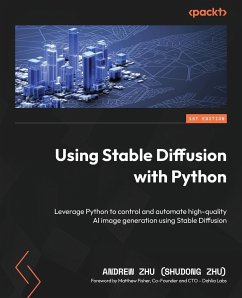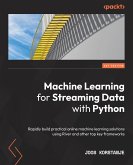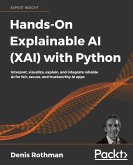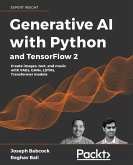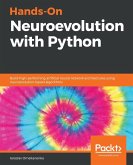Master AI image generation by leveraging GenAI tools and techniques such as diffusers, LoRA, textual inversion, ControlNet, and prompt design in this hands-on guide, with key images printed in color Key Features - Master the art of generating stunning AI artwork with the help of expert guidance and ready-to-run Python code - Get instant access to emerging extensions and open-source models - Leverage the power of community-shared models and LoRA to produce high-quality images that captivate audiences - Purchase of the print or Kindle book includes a free PDF eBook Book Description Stable Diffusion is a game-changing AI tool that enables you to create stunning images with code. The author, a seasoned Microsoft applied data scientist and contributor to the Hugging Face Diffusers library, leverages his 15+ years of experience to help you master Stable Diffusion by understanding the underlying concepts and techniques. You'll be introduced to Stable Diffusion, grasp the theory behind diffusion models, set up your environment, and generate your first image using diffusers. You'll optimize performance, leverage custom models, and integrate community-shared resources like LoRAs, textual inversion, and ControlNet to enhance your creations. Covering techniques such as face restoration, image upscaling, and image restoration, you'll focus on unlocking prompt limitations, scheduled prompt parsing, and weighted prompts to create a fully customized and industry-level Stable Diffusion app. This book also looks into real-world applications in medical imaging, remote sensing, and photo enhancement. Finally, you'll gain insights into extracting generation data, ensuring data persistence, and leveraging AI models like BLIP for image description extraction. By the end of this book, you'll be able to use Python to generate and edit images and leverage solutions to build Stable Diffusion apps for your business and users. What you will learn - Explore core concepts and applications of Stable Diffusion and set up your environment for success - Refine performance, manage VRAM usage, and leverage community-driven resources like LoRAs and textual inversion - Harness the power of ControlNet, IP-Adapter, and other methodologies to generate images with unprecedented control and quality - Explore developments in Stable Diffusion such as video generation using AnimateDiff - Write effective prompts and leverage LLMs to automate the process - Discover how to train a Stable Diffusion LoRA from scratch Who this book is for If you're looking to gain control over AI image generation, particularly through the diffusion model, this book is for you. Moreover, data scientists, ML engineers, researchers, and Python application developers seeking to create AI image generation applications based on the Stable Diffusion framework can benefit from the insights provided in the book. Table of Contents - Introducing Stable Diffusion - Setting Up the Environment for Stable Diffusion - Generating Images Using Stable Diffusion - Understanding the Theory Behind Diffusion Models - Understanding How Stable Diffusion Works - Using Stable Diffusion Models - Optimizing Performance and VRAM Usage - Using Community-Shared LoRAs - Using Textual Inversion - Overcoming 77-Token Limitations and Enabling Prompt Weighting - Image Restore and Super-Resolution - Scheduled Prompt Parsing - Generating Images with ControlNet - Generating Video Using Stable Diffusion - Generating Image Descriptions using BLIP-2 and LLaVA - Exploring Stable Diffusion XL (N.B. Please use the Read Sample option to see further chapters)
Hinweis: Dieser Artikel kann nur an eine deutsche Lieferadresse ausgeliefert werden.
Hinweis: Dieser Artikel kann nur an eine deutsche Lieferadresse ausgeliefert werden.

